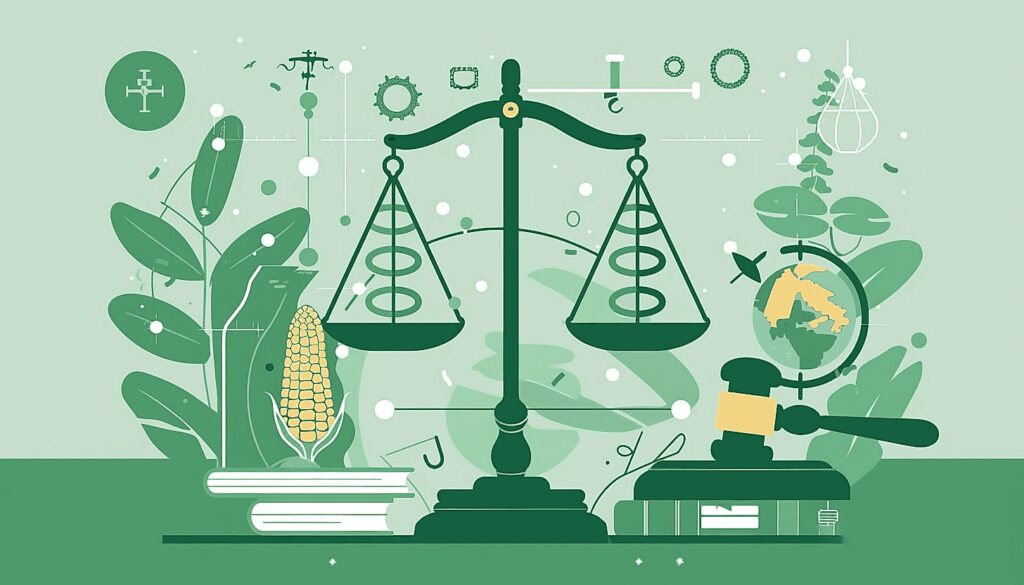The global conversation on genetically modified organisms (GMOs) has become a contentious issue.
With proponents highlighting the potential to address food security, and opponents voicing concerns about biodiversity and human health, the debate is far from settled.
Regulatory bodies around the world are grappling to formulate an appropriate legislative framework to manage this concept.
Navigating through nuanced ethical, economical, and environmental considerations make it a challenging task.
While some countries have embraced GMOs with open arms, others have imposed strict regulations against it.
This article seeks to explore the legislative hurdles of adopting GM crops and food products.
- Existence of strong anti-GMO activism and lobbying efforts.
- Varied international regulations create GMO adoption challenges.
- Patents on GMO technology raise significant legal issues.
- Enacting effective GMO labeling rules can be complex.
- Cross-contamination risks with traditional crops raise concerns.
These key takeaway points have just set the foundation for our understanding of legislative challenges faced in the adoption of GMOs.
In the forthcoming sections, we don’t just stop here, but expand our exploration into other pertinent areas related to this topic. We will be examining the scientific breakthroughs that feed into the debate and the contrasting public opinions on GMO use.
Don’t miss out on the opportunity to learn about the potential advantages and disadvantages of GMOs from various perspectives. This information could be crucial for forming a well-rounded viewpoint on the subject.
Without a doubt, an engaging set of insights on GMOs are waiting for you as you continue reading.
Contents
- Legislative Challenges In Adopting Gmos
- 1. Existence of Anti-GMO Activism and Lobbying
- 2. Differences in International GMO Regulations
- 3. Patent issues related to GMO technology
- 4. Difficulty in Enacting GMO Labeling Rules
- 5. Risk of cross-contamination with traditional crops
- 6. Litigation risks from potential health impacts
- 7. High Costs of Regulatory Compliance
- 8. Ethical and Religious Objections to Genetic Modification
- 9. Poor Public Understanding of GMO Science
- 10. Swiftly Evolving Nature of Genetic Technology
- The Bottom Line
Legislative Challenges In Adopting Gmos
1. Existence of Anti-GMO Activism and Lobbying
In Short: Anti-GMO activism and lobbying significantly influence legislative decisions around genetically modified organisms (GMOs), often hindering their adoption due to concerns over health, corporate control, environmental impact, and ethics. Overcoming such strong opposition may necessitate a shift in public perception, achieved through dialogue and engagement, to fully comprehend the potential of GMOs.
Anti-GMO activism and lobbying play a substantial role in the legislative challenges of adopting genetically modified organisms (GMOs).
The powerful influence of these factions can greatly hinder the legislative process and consequently limit the potential benefits of GMOs.
Opponents often assert that GMOs can pose a threat to human health and biodiversity, an argument which wields considerable influence in legislative decisions.
This intense opposition has caused many lawmakers to struggle with mediating between the demands of anti-GMO lobbyists and the potential benefits of GMO implementation.
Let’s talk more about the reasons behind these intense anti-GMO sentiments.
There are various reasons for the intense opposition to GMOs, primarily:
- Fears over potential health impacts, despite the scientific consensus that GMOs are safe to consume.
- Concerns over corporate control of agriculture, as GMOs are often patented, leading to fears of monopolistic tendencies in the sector.
- Worries about the environmental impact, particularly the potential for cross-contamination with traditional crops.
- Ethical objections to altering the genetic makeup of nature’s organisms.
These concerns, whether factual or not, strongly influence the perception and ultimately the adoption of GMOs.
Politicians, ever cognizant of public sentiment, often teeter on the decision to support GMOs due to these prevailing attitudes.
This presents significant challenges especially in democratic societies where public opinion heavily impacts political decisions.
In extreme cases, anti-GMO activism has resulted in vandalism and destruction of GMO research sites, considerably hindering scientific progress.
The presence of persistent lobbying campaigns in this arena adds another complicated layer to the adoption of GMO legislation.
Lobbying, fueled by anti-GMO sentiments, shapes the legislative landscape by exerting pressure on lawmakers, pushing them towards policies that restrict or outright ban GMOs.
Indeed, the anti-GMO marching song seems to be a resounding chorus of “Don’t tamper with nature.”
No doubt, the legislative process of adopting GMOs is a highly contested and deeply emotive issue, fraught with challenges.
Overcoming these hurdles may require a shift in public perception which can only be achieved through demystifying GMOs, open dialogue and stakeholder engagement.
2. Differences in International GMO Regulations
In Short: International GMO regulations vary significantly, leading to challenges for multinational companies, global trade, and scientific research. The way forward may involve enhanced international cooperation, standardized regulatory measures, and robust dialogue understanding diverse views shaping these laws.
One of the significant challenges in adopting Genetically Modified Organisms (GMOs) lies in the stark variances in regulations from one country to another. Different nations around the globe have established their distinct sets of rules and policies concerning GMO production, processing, and marketing, which can create complications for multinational companies.
At one end of the spectrum, the United States has relatively relaxed regulations concerning GMOs. Here, GMOs are major components of the food supply and typically do not require explicit labeling.
In contrast, the European Union (EU) has taken a more precautionary stance. In the EU, GMO products must undergo a detailed safety assessment before they can be approved, a process that includes public consultation and final approval by the European Commission.
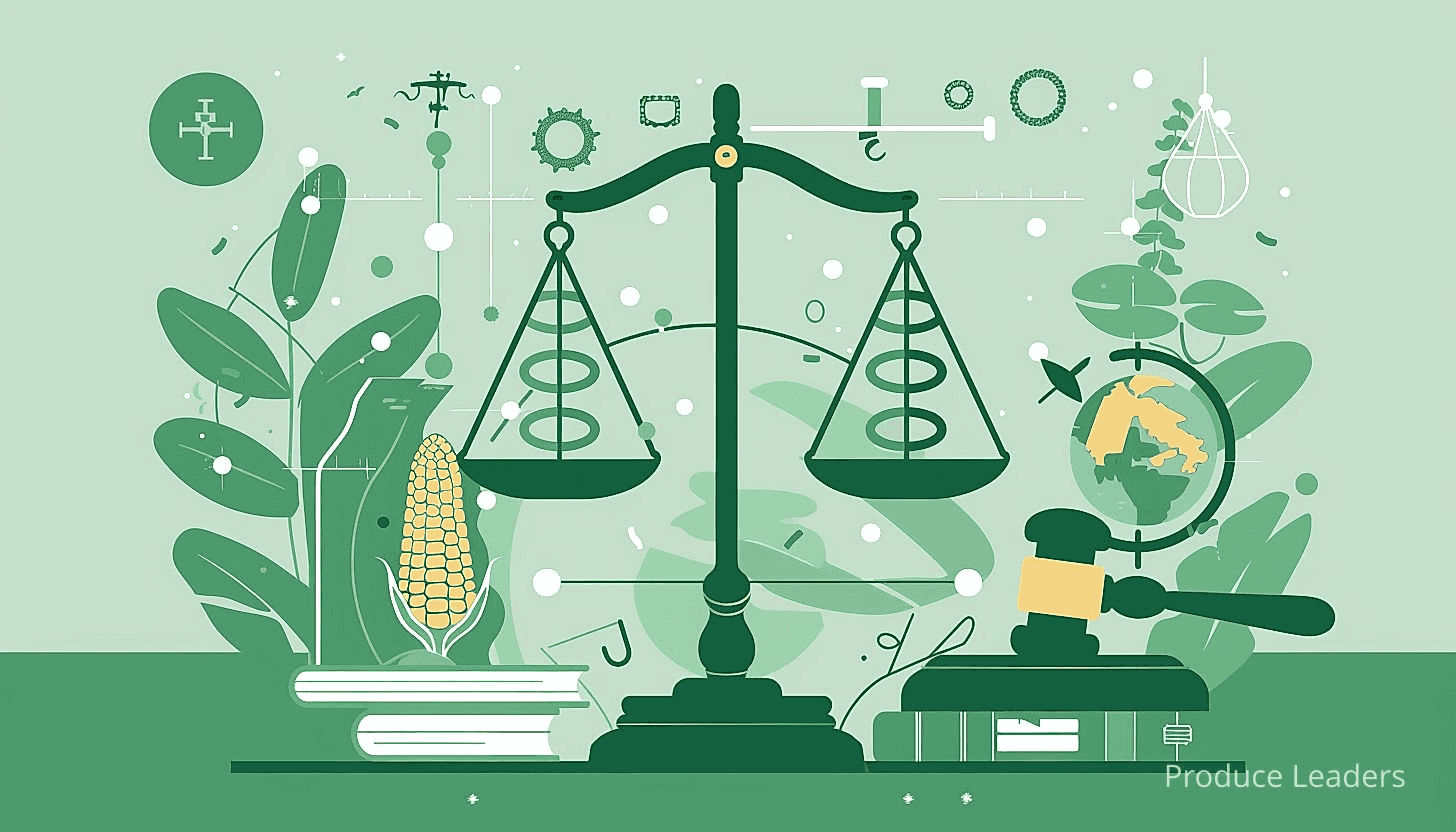
Furthermore, the EU mandates clear labeling of all GMO products so that consumers can make informed choices. GMO cultivation also needs permits, and individual member states have the right to restrict or prohibit it outright.
Given the above difference, let’s look at some specific examples of how international GMO regulations differ:
- The regulations in India highlight a middle-ground approach. GMO crops are allowed but must undergo rigorous multi-level testing and clearances.
- In contrast, Russia has taken a stringent stance with a complete ban on GMO cultivation and strict labeling requirements for GMO food products.
- Meanwhile, Brazil is one of the largest producers of GMO crops worldwide, reflecting more relaxed regulations, similar to the US.
These variances in international regulations pose serious challenges to global trade in GMO products. For instance, a product that is approved for sale as a GMO product in one country may not be permitted in another, leading to complexities in import and export laws.
Also, these regulations’ complexity and variation can lead to economic considerations. In some cases, companies might retreat from markets with stricter regulations due to the cost and time required for compliance, thus limiting the diversity of goods available to consumers.
These hurdles not only affect the global trade of GMOs but also hinder scientific research and advancements in genetic technology. Regulating agencies worldwide must strike a balance to ensure that the benefits of GMOs can be globally disseminated without compromising safety and environmental integrity.
Nevertheless, it’s important to acknowledge that these different stances towards GMO regulations represent each country’s socio-economic contexts, cultural norms, and public perceptions towards biotechnology and food safety.
It indicates the need for a more harmonious global approach towards the regulation of GMOs; still, this remains an uphill struggle given differing domestic concerns and international relations dynamics.
The way forward may necessitate enhancing international cooperation in GMO research, harmonizing regulatory standards, and fostering robust dialogue for understanding the diverse perspectives that shape these regulations.
3. Patent issues related to GMO technology
In Short: Patenting in GMO technology spurs innovation and commercialization but often leads to conflicts over intellectual property rights and raises ethical issues about ‘owning’ a living organism. A prompt resolution to these ongoing patent disputes is vital for balancing inventors’ rights, fostering ethical research, promoting societal benefits, and ensuring global food security.
One of the crucial hurdles when implementing genetically modified organisms (GMOs) revolves around the complicated web of patent issues inherent to this technology.
The unique nature of manipulating organisms at a genetic level has introduced a whole new battlefield for intellectual property rights.
Mostly because genetical alterations to certain organisms (like crops for example) can create distinct plant varieties which are patentable.
However, this often leads to conflicts and disputesover patent rights between different companies and researchers.
Moreover, these battles are not confined within domestic boundaries as several multinational corporations are involved in the production and distribution of GMOs, making the patent issues a global concern.
The multibillion-dollar agribusiness industry has raised concerns about monopolistic tendencies where a few corporations hold patents to a large majority of genetically modified organisms.
It’s worth noting why patenting is deemed necessary.
- Securing patents encourages research and innovation by guaranteeing exclusive rights to the patent holder for a specified time period
- It fosters commercialization as companies can reap benefits from their investments in research and development
- Patenting allows for standardization and documentation of new genetic modifications, providing a wealth of scientific resource
However, the drawbacks cannot be overlooked.
Exclusive control over a patent might lead to monopolistic exploitation where the corporation can dictate price and availability, potentially affecting food security on a global scale.
The high cost of obtaining a patent, coupled with following enforcement and maintaining it, can be an obstruction for small scale farmers and researchers.
Furthermore, the argument of whether living organisms, or their genetic makeup, can be “owned” or classified as someone’s property remains a fundamental ethical issue.
Prompt resolution and regulation regarding patent issues is an essential area to address in legislating GMO adoption.
Pro Tip: Navigating GMO-related patent laws can be challenging, but it’s crucial to establish a balanced system that ensures inventors’ rights, promotes innovation and ethical practices, and contributes to societal and scientific progress.
Striking a balance between protecting inventors’ rights, encouraging innovation, and ensuring food security and accessibility for all is indeed a complex task.
While navigating the patent laws surrounding GMOs presents a challenge, it is essential to foster a system that promotes ethical practices, benefits society at large, and contributes to scientific progress.
4. Difficulty in Enacting GMO Labeling Rules
In Short: Enforcing GMO labeling legislation is significantly hindered by differing global standards, supply chain intricacies, interference from free-trade agreements, consumer misunderstanding, and pressures from biotech companies. The challenges necessitate global cooperation, ongoing public education, and steadfast political commitment for effective implementation and enforcement of GMO labeling rules.
One formidable challenge in the realm of GMOs involves the enforcement of labeling rules.
Given that genetically modified organisms have become a significant part of our global food chain, the call for clear, concise, and informative GMO labeling has grown louder and more urgent.
However, it’s important to acknowledge the central role of legislation in establishing satisfactory GMO labeling rules.
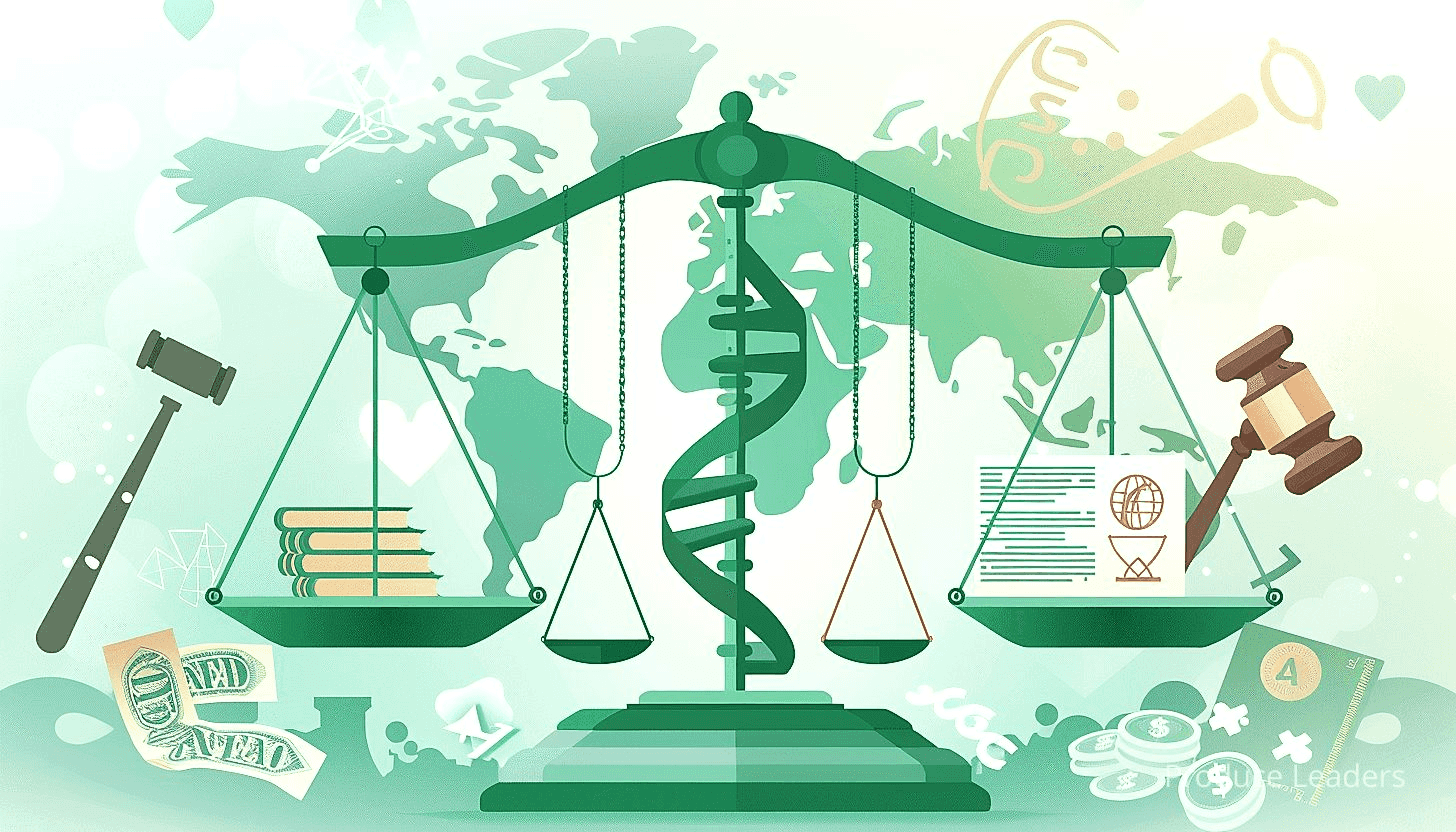
Various barriers exist, complicating the implementation of such rules and creating a context of legal and regulatory complexities.
A key issue is the lack of international consensus on GMO labeling.
With countries differing greatly on GMO labeling regulations, it’s challenging to create a uniform standard that ensures clarity and information accuracy for consumers worldwide.
Each country has its own standards, definitions, and requirements when it comes to GMO labeling.
Some countries require labeling for any product containing GMOs, while others only mandate it if the GMO content exceeds a certain percentage.
Amid these varying regulations, enforcing a universal GMO labeling rule becomes a major legislative challenge.
Let’s have a look at some of the key issues adding to the difficulties in enacting GMO labeling rules, to better understand the complexity of the situation:
- Diverse standards, thresholds, and definitions concerning GMOs across different nations
- The intricacy of segregating and tracking genetically modified food ingredients throughout the supply chain
- Existence of free-trade agreements that may conflict with stringent GMO labeling laws
- Lastly, the Consumer understanding and interpretation of GMO labels poses a considerable challenge
Another hurdle is the immense pressure exerted by biotech corporations and agricultural conglomerates.
These entities, often backed by powerful lobbies, resist stringent labeling rules, arguing they would create unnecessary fear and confusion among consumers.
This resistance often complicates legislative efforts to impose mandatory GMO labeling rules.
Fighting against this strong current requires unwavering commitment from lawmakers and the support of a well-informed public.
Lastly, addressing the scientific literacy gap among consumers is essential.
Important: Enforcing GMO labeling rules is a significant legislative challenge due to diverse standards across nations, complexities in tracking genetically modified ingredients through the supply chain, potential conflicts with existing free-trade agreements, and the significant resistance from biotech corporations and agricultural conglomerates.
Without proper understanding of GMO science, consumers may misunderstand or misinterpret GMO labels, diluting the impact of any labeling legislation.
No doubt, enacting and enforcing GMO labeling rules present a tremendous legislative challenge, requiring global cooperation, public education, and unwavering political will.
5. Risk of cross-contamination with traditional crops
In Short: Cross-contamination between genetically modified and traditional crops presents considerable challenges in legislating GMOs given their potential economic, environmental, and biodiversity impacts. The issue demands extensive regulation measures, effective enforcement, and ongoing research into containment strategies, complicated further by the international scope of food supply chains.
The dangers related to the potential for cross-contamination between genetically modified organisms (GMOs) and traditional crops represent a significant challenge in the legislative regulation of GMOs.
This risk refers to the inadvertent mixing of GMO crops with non-GMO crops, either through natural processes such as pollen drift or through errors during harvesting, storage, and transportation.
Given the widespread use of GMOs in agriculture, the potential for cross-contamination is substantial.
Despite efforts to create policies and practices to prevent cross-contamination, the volatile nature of the environment and the scale of agricultural processes, make it highly unlikely to prevent all instances completely.
One of the major consequences of such accidental mixing is the profound economic impact that can occur.
A good example would be, certain export markets, such as the European Union, have strict regulations regarding the presence of GMOs, and discovery of accidental contamination can lead to the rejection of shipments, leading to significant financial losses for farmers and agricultural businesses.
Aside from economic implications, there are also serious environmental concerns raised by the risk of cross-contamination.
Genetically engineered traits, such as resistance to certain pests or herbicides, can potentially spread to wild relatives of the crop plants, resulting in ‘superweeds’ or ‘superpests’ that are more difficult to control.
Moreover, the spread of genetically engineered traits may lead to a decrease in biodiversity, which can disrupt ecosystems and negatively impact wildlife.
Let’s consider some major factors contributing to the risk of cross-contamination:
- The proximity of GM and non-GM fields. Close geographical proximity increases the likelyhood of cross-pollination between GM and non-GM crops.
- The effectiveness of containment measures – These can range from physical barriers to specific cultivation practices designed to limit pollen flow.
- The nature of the crop itself – Some crops are more prone to cross-pollination than others. For instance, maize pollen can travel significant distances, while wheat pollen is heavy and does not disperse as easily.
Clearly, the risk of cross-contamination is not just a theoretical concern but a concrete issue with potential economic, environmental, and biodiversity impacts.
As such, legislators face the complex challenge of developing regulations that are stringent enough to minimize cross-contamination, yet flexible enough to be practically implemented by farmers and the agricultural industry.
Pro Tip: To minimize the risk of cross-contamination between GMO and non-GMO crops, it is crucial to create strict and yet flexible regulations, effective containment measures, and promote public education about GMO risks and safety measures.
Furthermore, given the international nature of food supply chains, harmonization of these regulations across different countries is an additional complication.
The comprehensive management of these risks requires not just well-considered legislation, but also effective enforcement, public education about GMO risks and safety measures, and ongoing research into the development of containment strategies and practices that are responsive to the evolving nature of GMO technology.
6. Litigation risks from potential health impacts
In Short: Litigation risks from potential health impacts of GMOs can significantly impede their production due to costs of defending lawsuits, potential damage to reputation, and the risk of product recalls. Product liability lawsuits not only from consumers but also other affected parties such as farmers and retailers pose notable challenges, with divergent regulatory approaches globally adding to the complexity.
An issue of significant concern within the arena of GMO adoption is the litigation risk from potential health impacts of genetically modified organisms.
As these biotech products continue to permeate our food supply, some individuals and advocacy groups have raised concerns about possible adverse health effects, which could give rise to costly lawsuits against producers or distributors of these products.
Lawsuits, or even the threat of them, can significantly impede the progress and profitability of GMO production.

The core of such litigation often hinges on claims of negligence or lack of adequate warning to consumers about potential health risks associated with GMOs.
Beyond the financial burden of defending such lawsuits, companies may also face potential damages or even product recalls if claims are proven.
I think it’s important to note the major aspects of litigation risks that mainly arise within this context.
- The steep financial burden associated with defending lawsuits.
- The potential damage to a company’s reputation.
- The risk of product recalls or withdrawal from the market.
- The possible financial implications of compensatory damages if lawsuits are successful.
Furthermore, it’s also worth mentioning that product liability lawsuits could be filed not only by consumers but also by other parties that may be affected negatively, such as farmers, retailers, and even non-profit organizations.
This broad range of potential plaintiffs further increases the litigation risk for companies involved in GMO production.
While the health impacts associated with GMOs remain a contentious topic across the globe, a number of legal jurisdictions have recognized potential risks, leading to lawsuits that claim harm from these products.
Modern GMO liability law is not consistent worldwide, with some countries like the United States having a more lenient approach, while others like European countries enforcing stricter regulations.
The divergent regulatory approaches to GMOs globally represent another challenge for companies as they navigate the potential legal pitfalls associated with their products.
Important: The potential health impacts of genetically modified organisms (GMOs) present significant litigation risks, which can impede the progress and profitability of GMO production due to negligence claims, hefty costs of defending lawsuits, potential product recalls, reputation damage and possible financial implications if lawsuits succeed.
It’s key to bear in mind that the potential for litigation extends beyond just GMO product manufacturers, but also to suppliers, distributors, and even retailers – truly a broad spectrum of litigation exposure.
Undoubtedly, the potential for litigation stemming from alleged health effects of GMOs poses a notable challenge to the legislative landscape around GMO adoption, and highlights the complexity in balancing the benefits and risks associated with such technologies.
7. High Costs of Regulatory Compliance
In Short: The high costs of regulatory compliance, including testing, research, and potential environmental impact monitoring, place a financial burden on businesses using genetically modified organisms (GMOs), hindering their wider acceptance. These expenses, coupled with mandatory GMO labeling and liability insurance, can disadvantage smaller enterprises and curb market diversity and competition, crucial for technological progress.
The economic strains imposed on businesses by the high costs associated with GMO regulations can prevent the broader acceptance of GMO usage.
One principal cost factor is the regulatory approval processes, which biotech companies need to navigate before they can release their products into the marketplace.
Completing these processes can take years and employ the resources of entire teams of specialists, all of whom need to be compensated for their expert work.
As a result, the overall price of producing a single genetically modified crop can swiftly spiral into the millions.
This puts a substantial financial burden on smaller enterprises who lack the resources of larger corporations.
These high costs may push some innovators out of the market entirely, reducing the overall diversity and competition which are important for technological advancement.
Let’s take a closer look at some other significant regulatory costs associated with GMO production:
- The costs incurred by testing and research to ensure that the genetically modified product is safe for consumption.
- The cost of monitoring and controlling potential environmental impacts of the GMO.
- Expense related to the compulsory labeling of GMO foods, a regulatory requirement in many nations.
- The need for businesses to purchase substantial liability insurance to cover potential litigation risks.
In addition, regulation changes can catch producers by surprise, resulting in unexpected financial losses.
For instance, if a new law calls for the labeling of all GMO products, companies will need to redesign their packaging and marketing, which can be a costly endeavor.
International businesses also have to navigate the complexities of diverse regulatory landscapes.
In one country, a product might be extensively examined before it’s approved; in another, that level of scrutiny might not be required.
This unpredictability makes it difficult to calculate the overall cost of entry into a new market, restricting the spread of genetically modified products.
Many argue the cost of regulatory compliance is unfairly weighted against GMO producers when compared to traditional farmers.
Despite the proven safety and sustainability of many genetically modified crops, producers must invest in time-consuming and costly risk assessments and apply for specific GMO permissions.
In contrast, traditional crop producers don’t have to undergo such strenuous regulations, giving them a potential economic advantage.
All in all, the high costs of regulatory compliance pose a significant challenge for the widespread adoption of GMOs.
8. Ethical and Religious Objections to Genetic Modification
In Short: Ethical and religious objections to genetic modification are a significant hurdle in embracing the full potential of GMO technologies. These objections – from respect for nature, concern for animal welfare, and religious beliefs – complicate the issue, resulting in legislative challenges and varying public opinions.
Getting into the realm of ethical and religious objections to genetic modification, the legislative challenges become intertwined with human psychology and deeply held beliefs.
The ethical considerations often stem from the manipulation of natural organisms, transforming the very essence of their genetic makeup.
Some individuals and groups, viewing the world through an ethical lens, argue that such manipulation intrudes upon nature’s inherent rights, and thereby crossing an inviolable line.
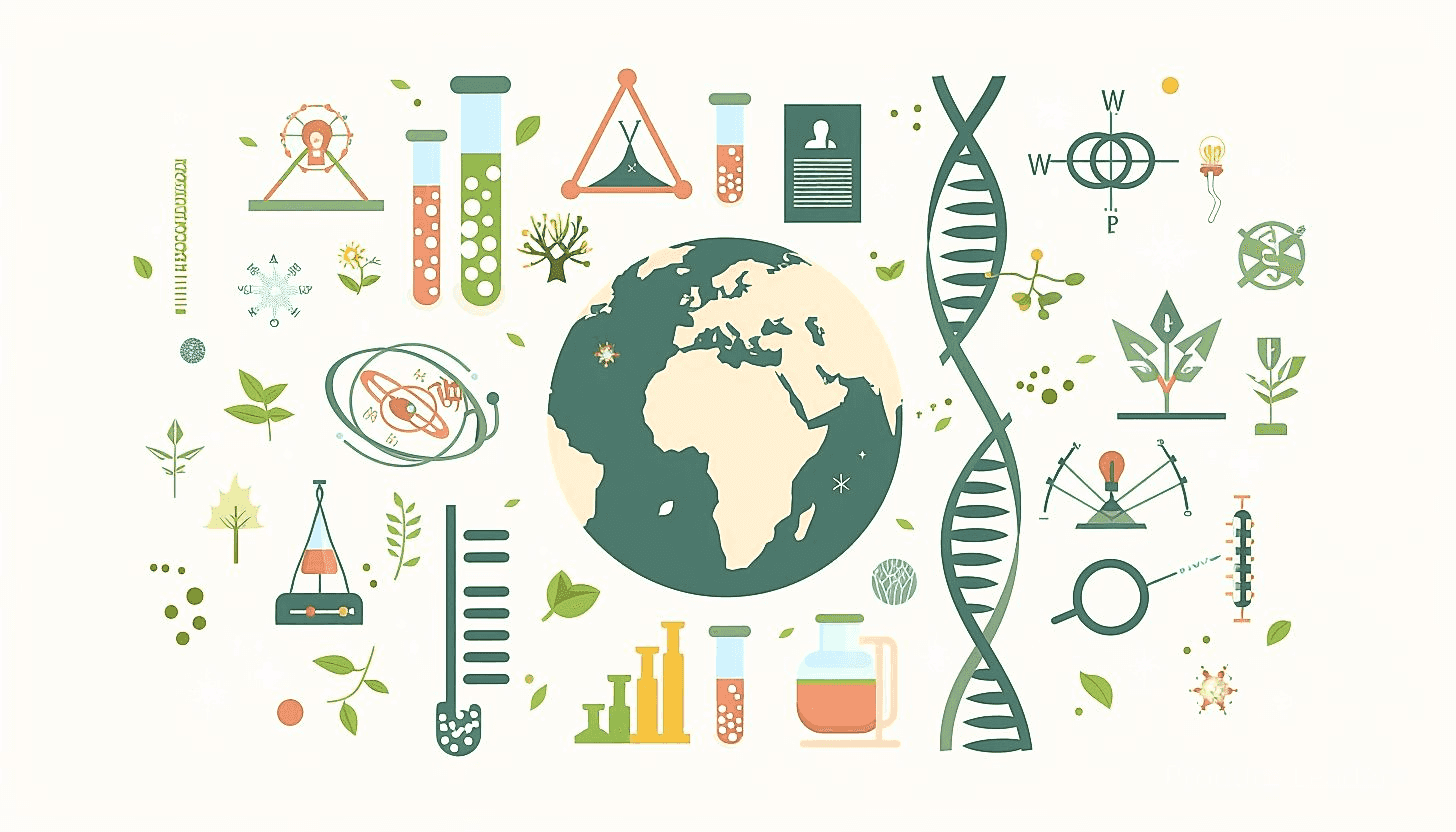
The introduction of GMOs could be seen as an unwarranted incursion into a realm that should remain pristine and untouched by human interference.
This perspective can create significant legislative challenges in adopting GMOs, especially when such viewpoints influence lawmakers or resonate with a substantial portion of the public.
In tackling this issue, we can identify three main subcategories of ethical and religious objections:
- Respect for nature – This encompasses the belief that tampering with nature’s inherent genetic structure is, in principle, wrong.
- Animal welfare – The concern here focuses on the potential harm GMO technologies might impart to animals, either directly through genetic alteration or indirectly via the ecosystem.
- Religious beliefs – Some religious doctrines or interpretations regard GMOs as ‘playing God’, a spiritual violation that cannot be justified.
Each of these subcategories represents a distinct ethical or religious challenge that can create substantial opposition to legislative efforts aimed at adopting more widespread use of GMOs.
Balancing these ethical and religious concerns with the potential benefits offered by GMOs, like improved crop yields or disease resistance, is a challenge many lawmakers face.
Complicating the issue further, the intensity of these objections can vary greatly from one individual to the next, making consensus difficult to reach.
These divergent views can result in polarized public opinion, making the job of crafting fair and balanced legislation even more complex.
Effectively addressing these concerns within legislation requires understanding, sensitivity and a commitment to thorough debate and public consultation.
Legislators, in dealing with these challenges, need to be equipped with extensive knowledge about the science behind GMOs, in order to effectively communicate the safety and benefits of such technology.
Furthermore, the integration of ethical considerations into the legislative process may provide an opportunity for dialogue and, potentially, a pathway towards increased acceptance of GMOs.
Nevertheless, these ethical and religious objections to genetic modification remain a key hurdle in fully embracing the potential of GMO technology.
9. Poor Public Understanding of GMO Science
In Short: The public’s poor understanding of complex Genetically Modified Organisms (GMO) science contributes to fear, suspicion, and unfavorable legislation. Factors behind this misunderstanding include scientific illiteracy, complicated terminology, misinformation, and media bias, necessitating the promotion of scientific education by the scientific community and governments.
A significant legislative challenge in the acceptance and adoption of Genetically Modified Organisms (GMOs) is the general misunderstanding of GMO science among the public.
Genetic modification, as a practice, is complex and filled with scientific jargon that can be difficult for a layperson to understand.
Thus, this lack of knowledge often breeds fear and suspicion, contributing to an unfavorable public perception of GMOs.
Public perception can, in turn, greatly influence legislative decisions and public policy
Recognizing the importance of a well-informed public, it is pertinent to dig in more into where the misunderstandings and misconceptions about GMOs stem from.
There are several root causes behind the poor understanding of GMO science among the public.
- Scientific Illiteracy: Firstly, scientific illiteracy is a problem not just exclusive to GMOs, but extends to other complex scientific subjects as well. As Genetically Modification is a heavily scientific field, the vast majority of the public does not have a nuanced understanding of it.
- Complicated Terminology: The jargonistic language used in the scientific field of genetics is another barrier for the general public. Terms such as “transgenic”, “genomic sequencing”, and “phylogenetics” can confuse the layperson and deter them from understanding GMO science.
- Misinformation: Fake news and misinformation spread through social media and the internet also plays a major role in the public’s misunderstanding of GMOs. Misleading reports can dramatically skew perception and breed fear towards GMOs.
Moreover, mass media does not often help in educating the public about GMO science.
Media representation of GMOs is frequently fraught with bias and misinformation, focusing on the negatives and possible risks of GMO rather than their benefits and potential.
These biased portrayals help fuel public distrust and confusion regarding GMOs, which can influence lawmakers and therefore legislation surrounding GMO science.
Arguably, this damaging cycle of misinformation perpetuates the general misunderstanding and unease surrounding GMO science.
Many believe that it is also, partly, the responsibility of the scientific community and governments to promote scientific understanding among the public.
They can help shape the narrative, with a balanced portrayal of the potential ameliorations as well as the risks involved in GMOs.
Still, finding effective ways to convey complex scientific concepts to the public remains a difficult task.
Reducing these barriers to understanding could potentially decrease public opposition, prompting more receptive government policies towards GMOs.
In the endeavor for wider acceptance of GMO technology, addressing and rectifying the poor public understanding of GMO science is a crucial and challenging task.
10. Swiftly Evolving Nature of Genetic Technology
In Short: The swift evolution of genetic technology is outpacing current legislation, and posing various regulatory challenges. There is a necessity for new policies that understand the nuances of this technology and foster international cooperation, while maintaining a balance between safety, transparency, innovation, and progress.
The evolution of genetic technology is not a slow and steady race, but rather a swift sprint, constantly propelling us into new terrain.
This rapid advancement presents its own set of difficulties when it comes to legislation and regulation.
The current laws and regulations surrounding GMOs were developed at a time when our understanding of genetic technology was far more primitive compared to what we know today.
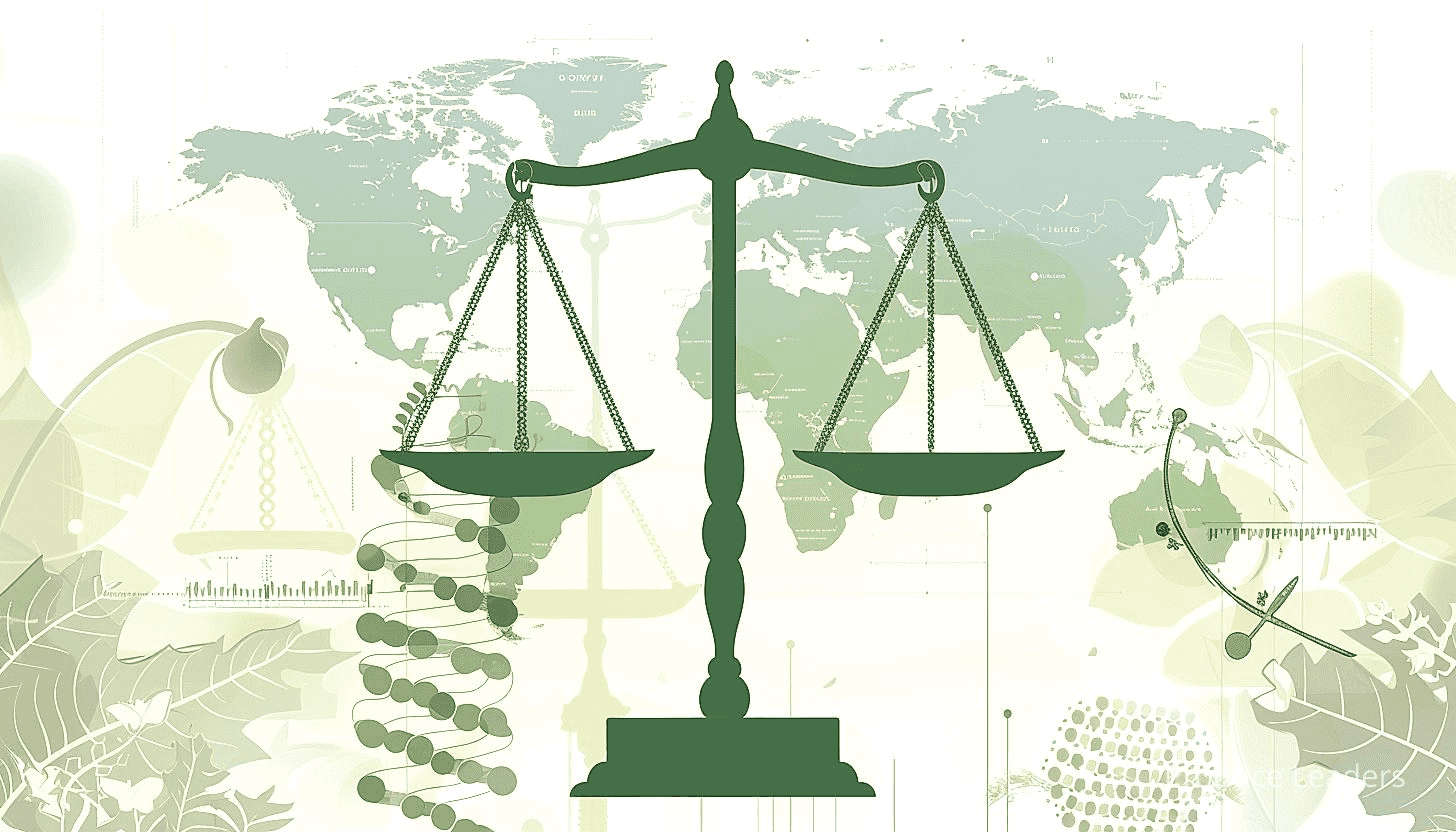
As a result, these established rules might not be fully equipped to address the complexities and nuances of newer advancements in the field.
For instance, the revolutionary CRISPR technology, a tool used for altering an organism’s DNA sequence, has opened up an entirely new realm of possibilities and challenges.
This is not something that previous legislation could have predicted or prepared for.
There are multiple facets to the rapidly changing landscape of genetic modification technology. Let’s consider some pertinent examples:
- The latest modification techniques are sometimes not even recognised as genetic modification under current legislations, leading to unclear regulatory approaches.
- Often, the novel traits being introduced via genetic modification are difficult to assess using traditional risk assessment paradigms, necessitating novel risk management strategies.
- The potential for untraceable modifications creates a challenge for control and legal enforcement.
In tackling these novel challenges, there is a need to reassess older regulations and develop new policies that not only ensure safety and transparency but also foster innovation and progress.
However, crafting such regulations is not a simple task.
A crucial challenge is the need for lawmakers to fully understand the science behind genetic technology and its implications.
Given the complex and technical nature of the field, this is a non-trivial feat.
The rapidly evolving nature of the technology often outpaces the rate of policy revision, leading to outdated or overcautious regulations that stifle innovation.
Furthermore, given the global nature of GMO trade, there is a necessity for international cooperation and harmonisation of genetic technology regulations.
This is a challenging endeavor, given the differing cultural, socio-economic, and political contexts in various countries.
Overall, the swiftly evolving nature of genetic technology presents an immense challenge for legislators, requiring a careful balancing act between safety, transparency, innovation and progress.
The Bottom Line
Adopting GMOs presents a myriad of legislative challenges that require deft attention and a balanced approach.
Through our exploration, it is evident that stringent measures, robust testing processes, effective regulations, and a level of transparency are paramount in upholding public trust and ensuring the safety of GMO integration into the food supply chain.
Despite the promise of GMOs in tackling food insecurity and climate change, the legislative landscape must first evolve to effectively address environmental, health, ethical, and socio-economic concerns.
Therefore, it is essential that lawmakers navigate these challenges with a commitment to scientific credibility, public consultation, and flexible legislation that can adapt to emerging information and technology.

